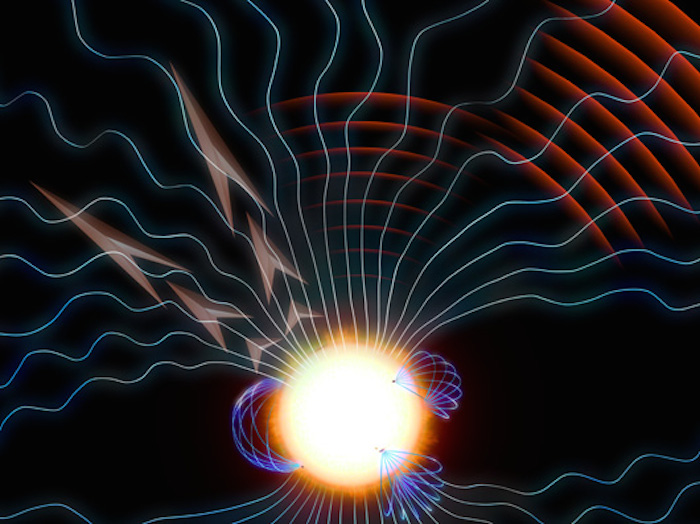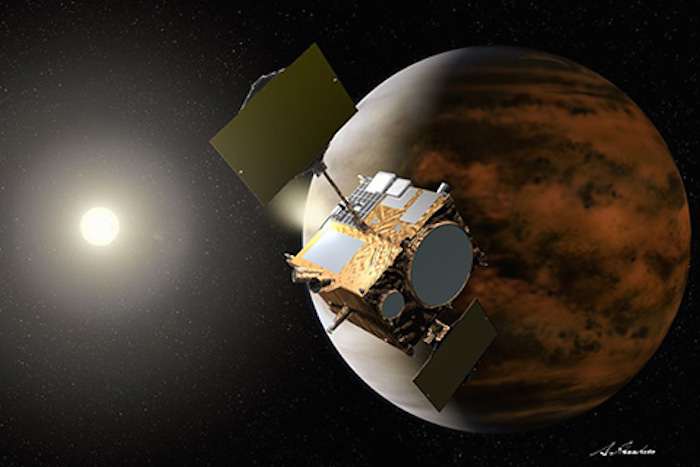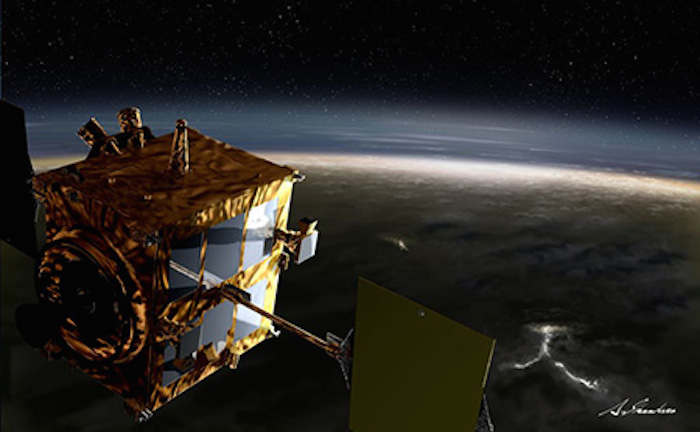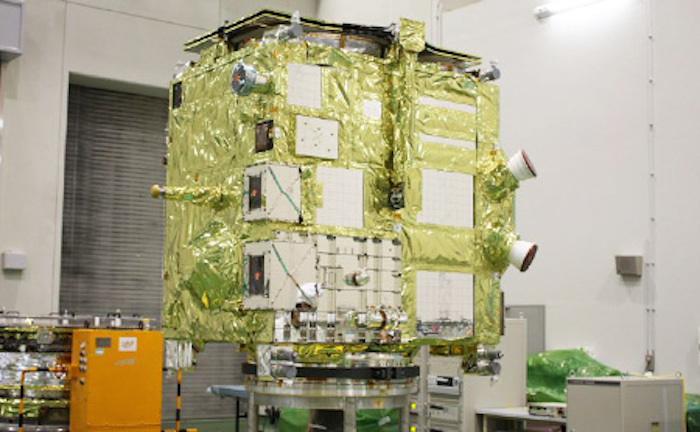.

A schematic diagram shows the research result summary. We found that the solar wind drastically accelerated around a location that is five times the radius away from the Sun. We also clarified that this acceleration was caused by heat created when sound waves that are generated within the solar wind are destroyed. The blue curvy lines indicate the lines of magnetic force, blue arrows are solar wind speed, and red marks are images of sound waves.
.
How is Solar Wind Caused?
Venus Climate Orbiter "AKATSUKI" Elucidated Solar Wind Acceleration
Japan Aerospace Exploration Agency (JAXA)
The University of Tokyo
Researchers at the Institute of Space and Astronautical Science (ISAS) and the University of Tokyo studied solar wind flowing a long distance from the Sun's vicinity, whose distance is about 20 times the radius of the Sun, and found that the wind drastically accelerated at around a location that is five times the radius away from the Sun. They also clarified that the acceleration of solar wind in such a faraway place was related to heating cause by an energy source of waves transmitting through solar wind.
This research result was attained thanks to an onboard instrument of the AKATSUKI, which observes Venus as it travels toward it. The achievement will provide us with a clue to solve the "corona heating issue," which has long been veiled in mystery.
---
Venus Climate Orbiter "AKATSUKI" (PLANET-C)

AKASTUKI will elucidate the mysteries of Venus, Earth’s twin sister.
Japan will initiate the beginning of a new era of Venusian exploration.
AKATSUKI (PLANET-C) is the next planetary exploration project for the Martian orbiter NOZOMI. Venus has long been referred to as Earth’s sister planet not only because its size and distance from the sun are similar to those of the Earth, but also because its birth formation is considered to be similar to that of the Earth at the genesis period of the solar system. However, Venus is actually very different from the Earth as it is veiled in high-temperature carbon dioxide and thick sulfuric-acid clouds. Also, above the surface of Venus, violent winds which reach some 400 kilometers per hour blow over. Clarification of the causes for such an environment will provide us with clues to understand why the Earth has become a peaceful and lively planet unlike Venus as well as to help understand climate change on Earth. Therefore, Venus is a very important subject for exploration to learn about the Earth’s environment.
---
Re-entry plan to Venus orbit

The AKATSUKI is expected to usher in a new era of Venusian exploration. It was launched aboard an H-IIA Launch Vehicle No. 17 in May 2010 (JST.) It smoothly flew and spurted out jets from its orbit control engine on Dec. 7, 2010. Unfortunately, the AKATSUKI failed to inject itself into the orbit of Venus. JAXA set up an investigation team not only to examine and study the causes of the failure and countermeasures, but also to see if it is possible to insert the AKATSUKI again into the orbit when it comes closer to Venus in about six years.
---
Characteristics of Venus Climate Orbiter "AKATSUK" (PLANET-C)

Infrared light enables more detailed investigation of Venus.
The probe vehicle of AKATSUKI will enter an elliptical orbit, 300 to 80,000 km away from Venus’s surface. This wide variation in distance will enable comprehensive observations of the planet’s meteorological phenomena and of its surface, as well as observations of the atmospheric particles escaping from Venus into space. It will also be possible to take close-up photos of Venus, and to observe the storm winds that blow on the Venusian surface, at speeds that reach 100 m a second - 60 times the speed at which Venus rotates. This phenomenon remains the biggest mystery of Venus, as it cannot be explained meteorologically. AKATSUKI will employ infrared light to observe and elucidate the mysteries surrounding the atmosphere under the clouds and the conditions on the planet’s surface. In addition, it will confirm the presence of active volcanoes and thunder.
Quelle: JAXA
5311 Views
